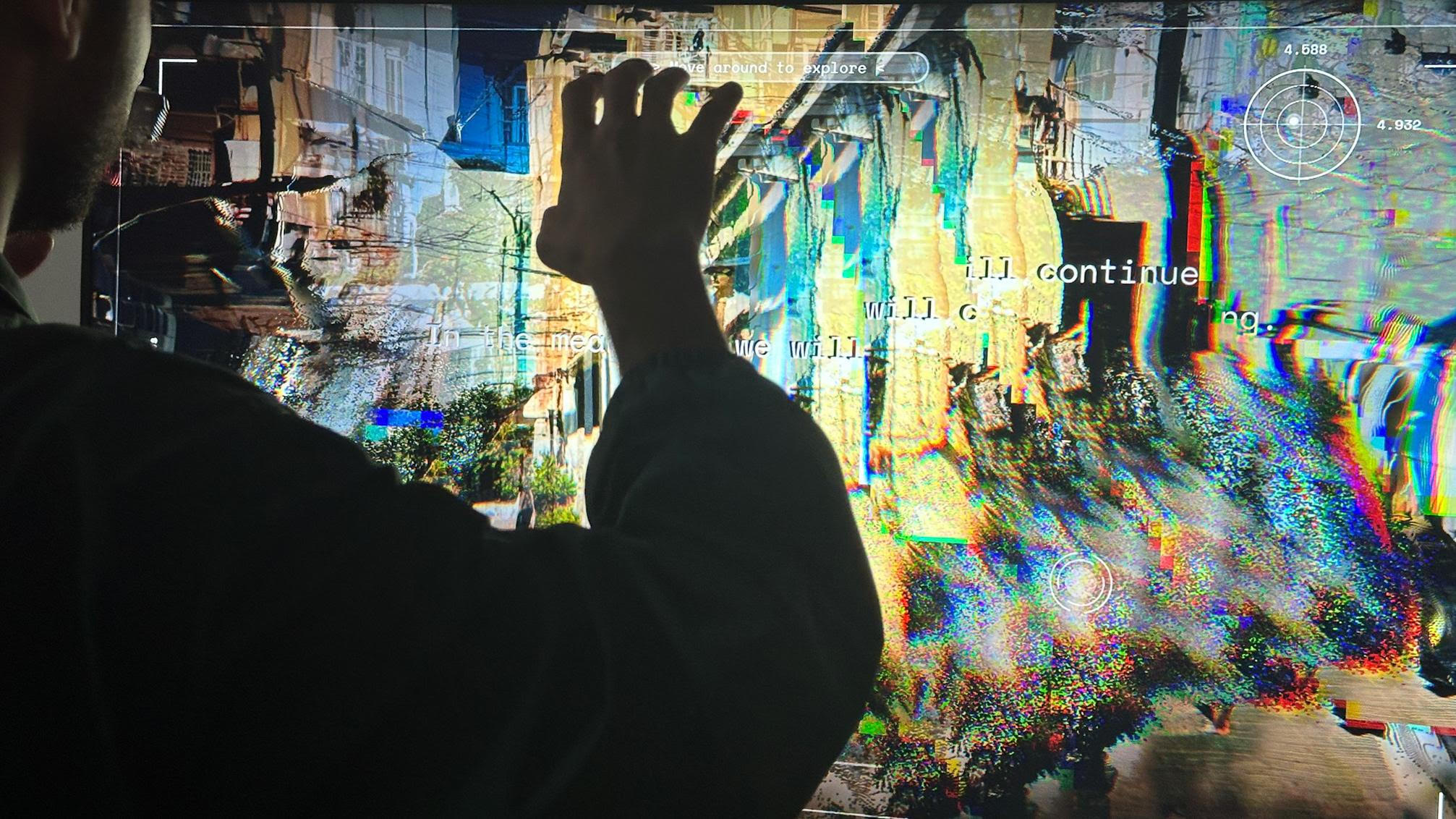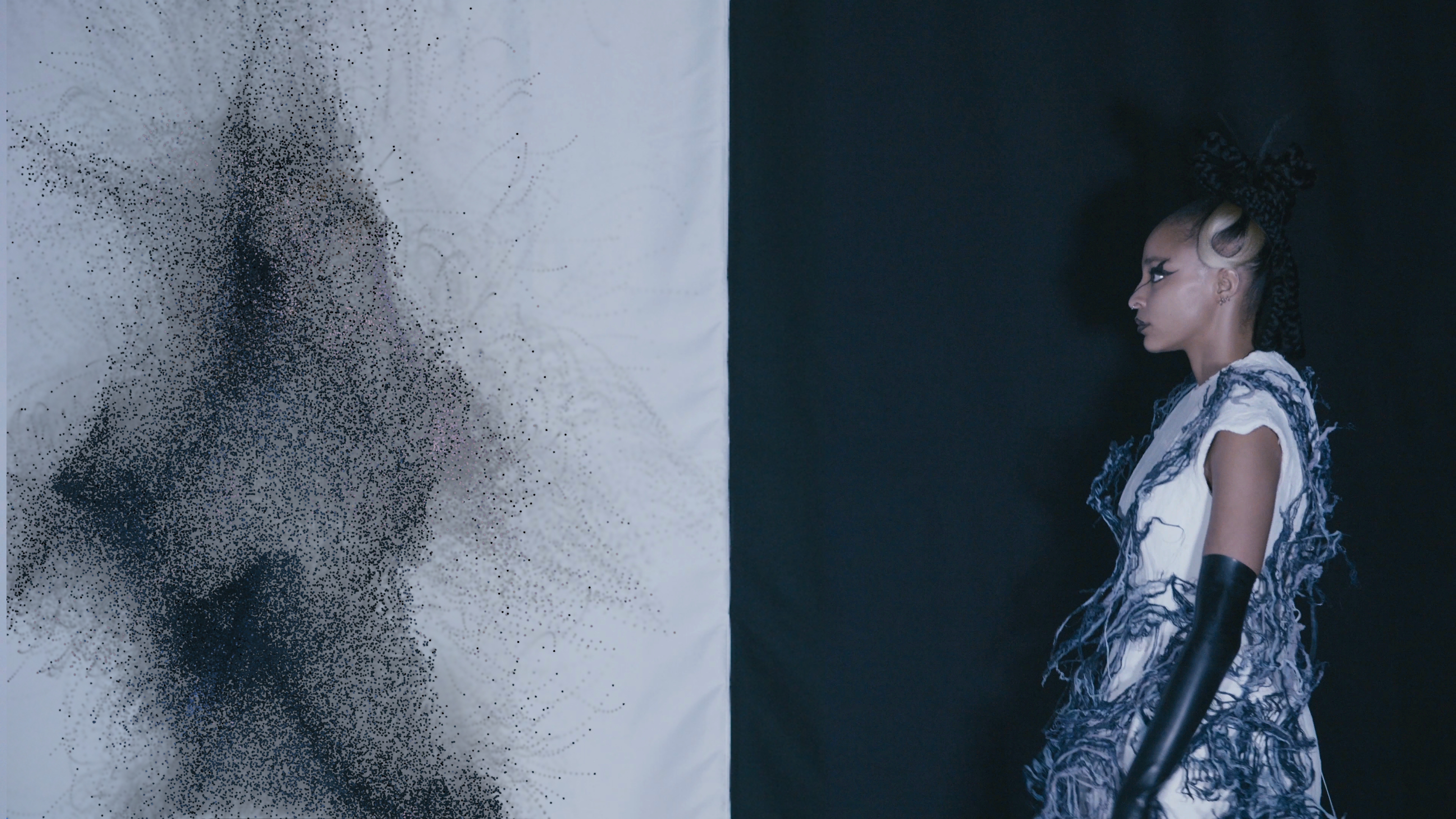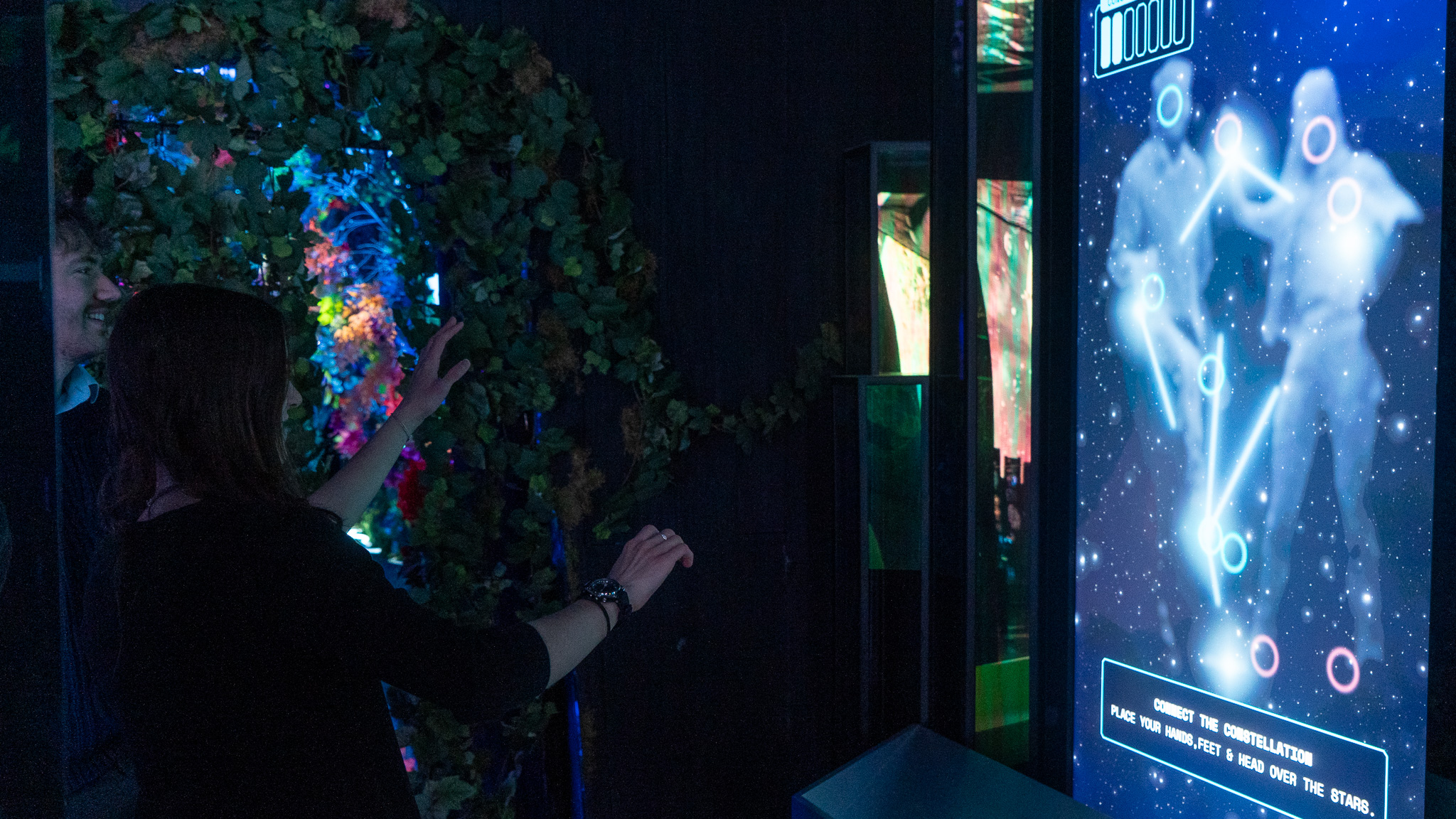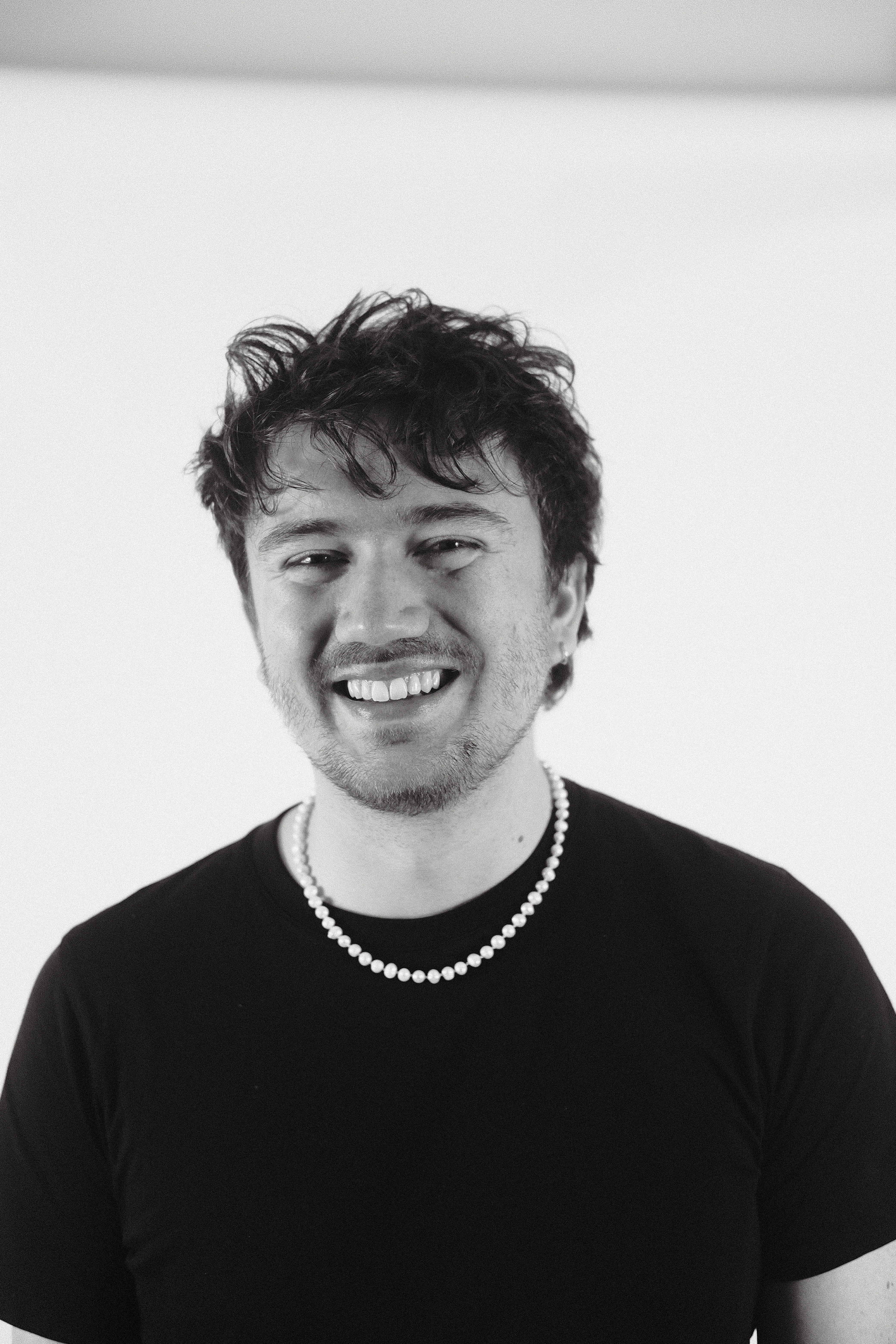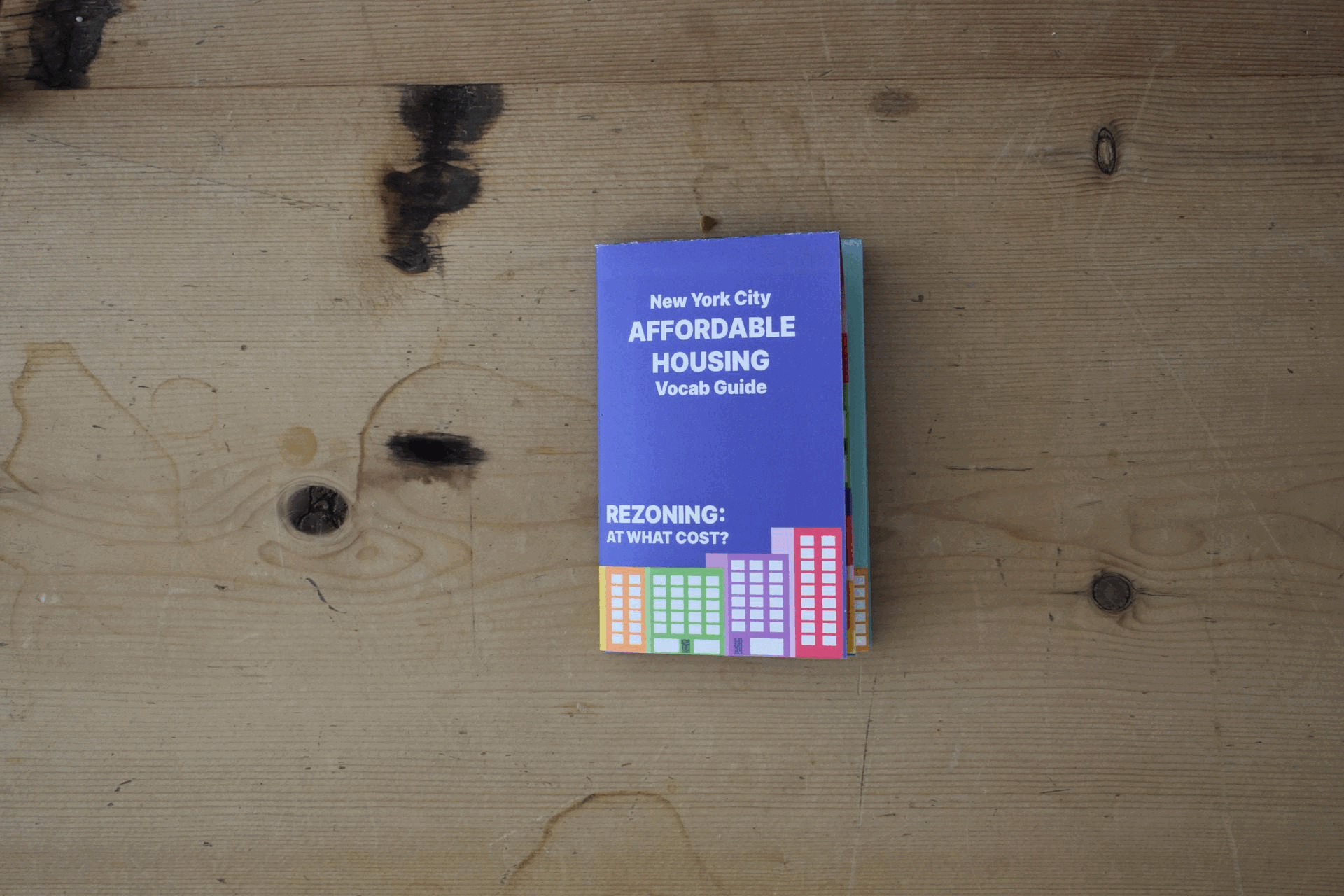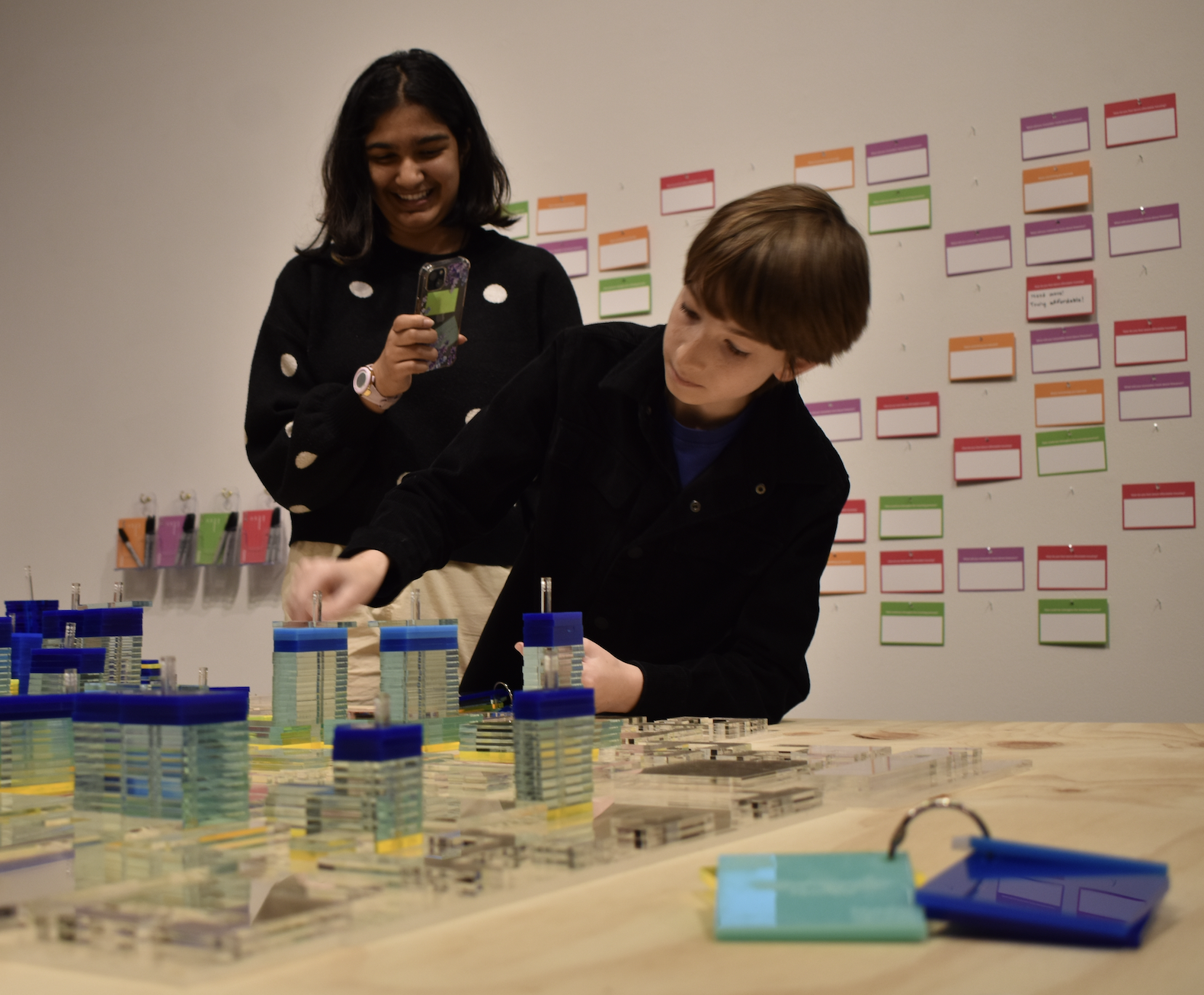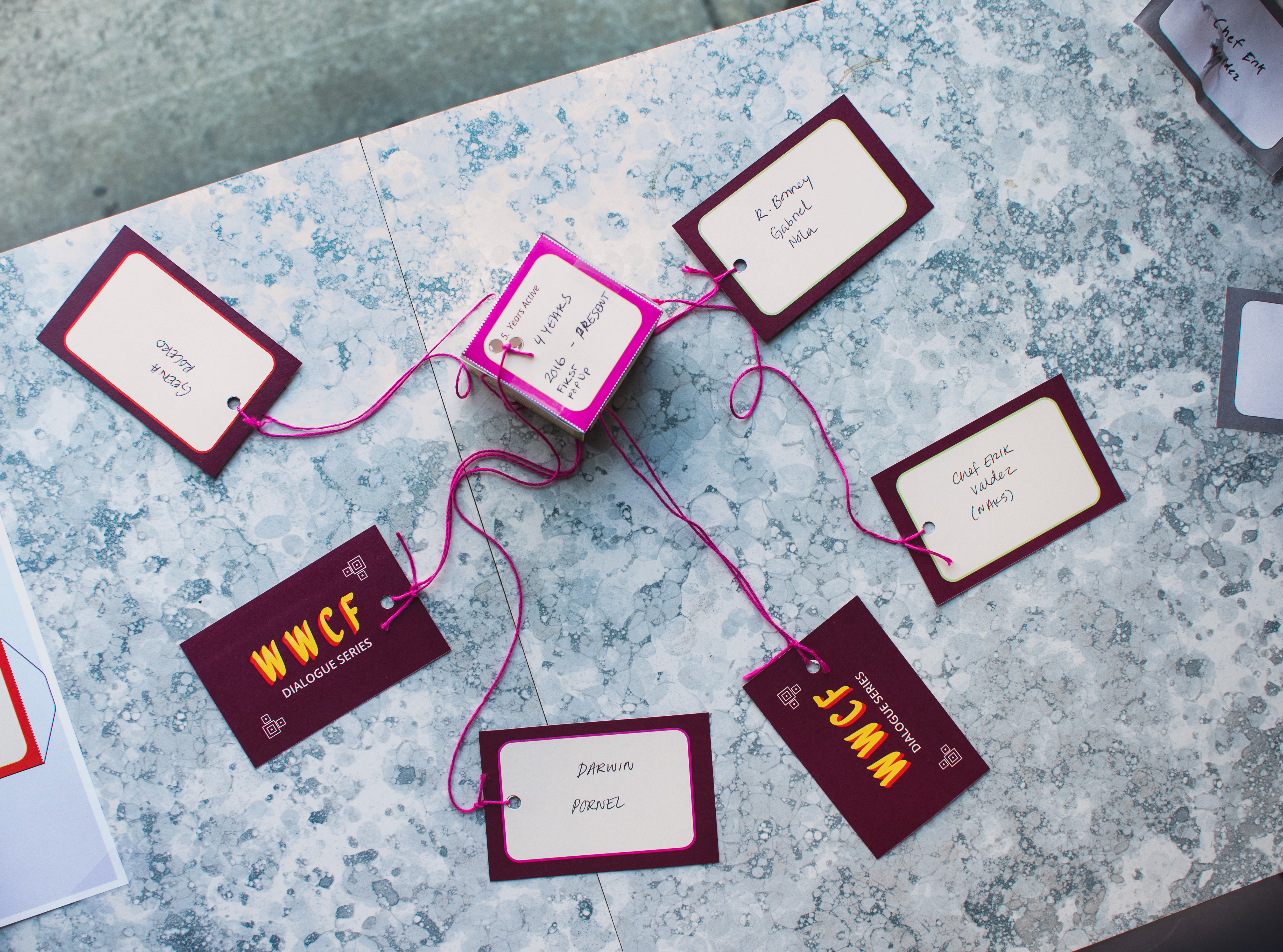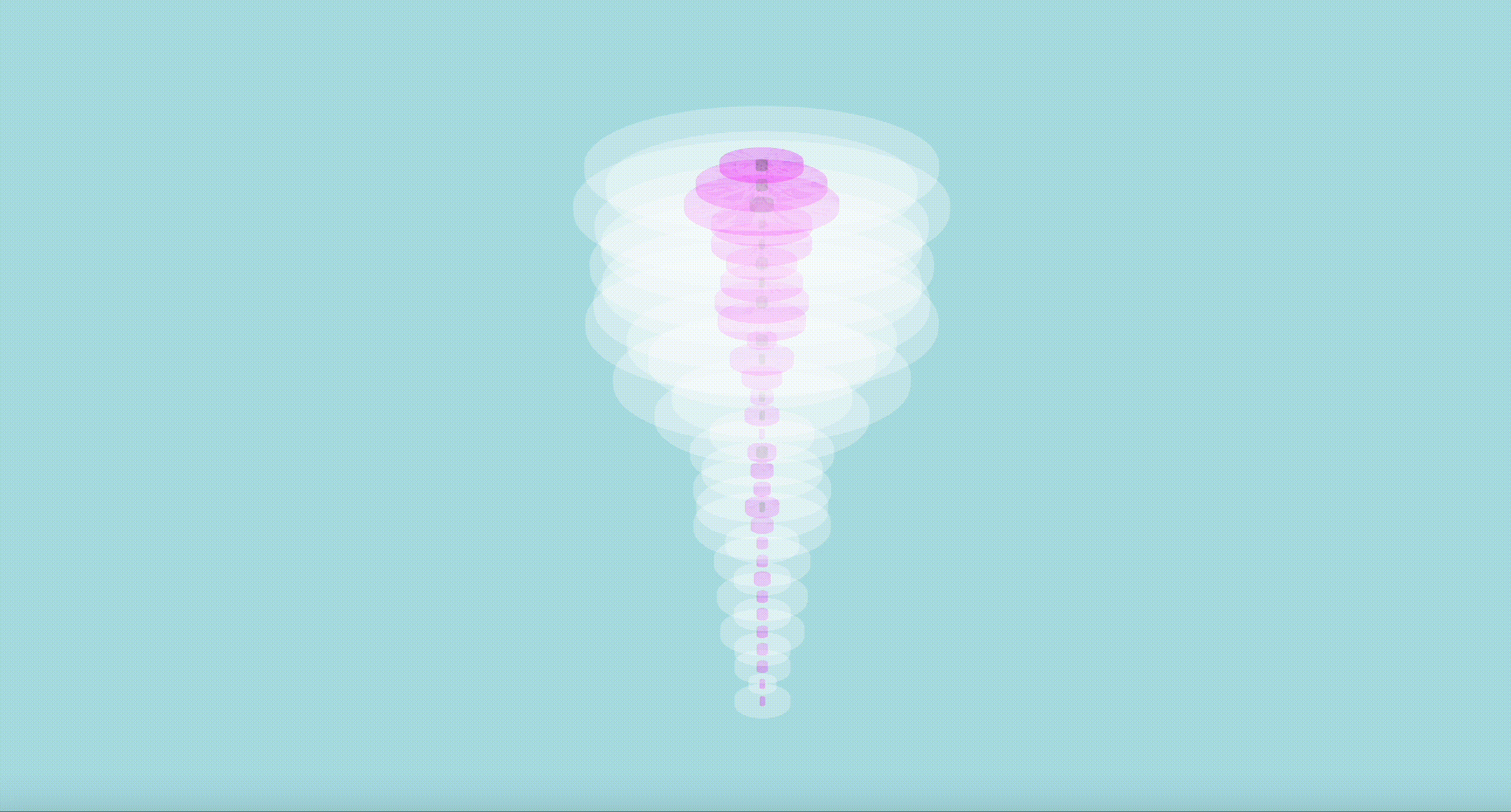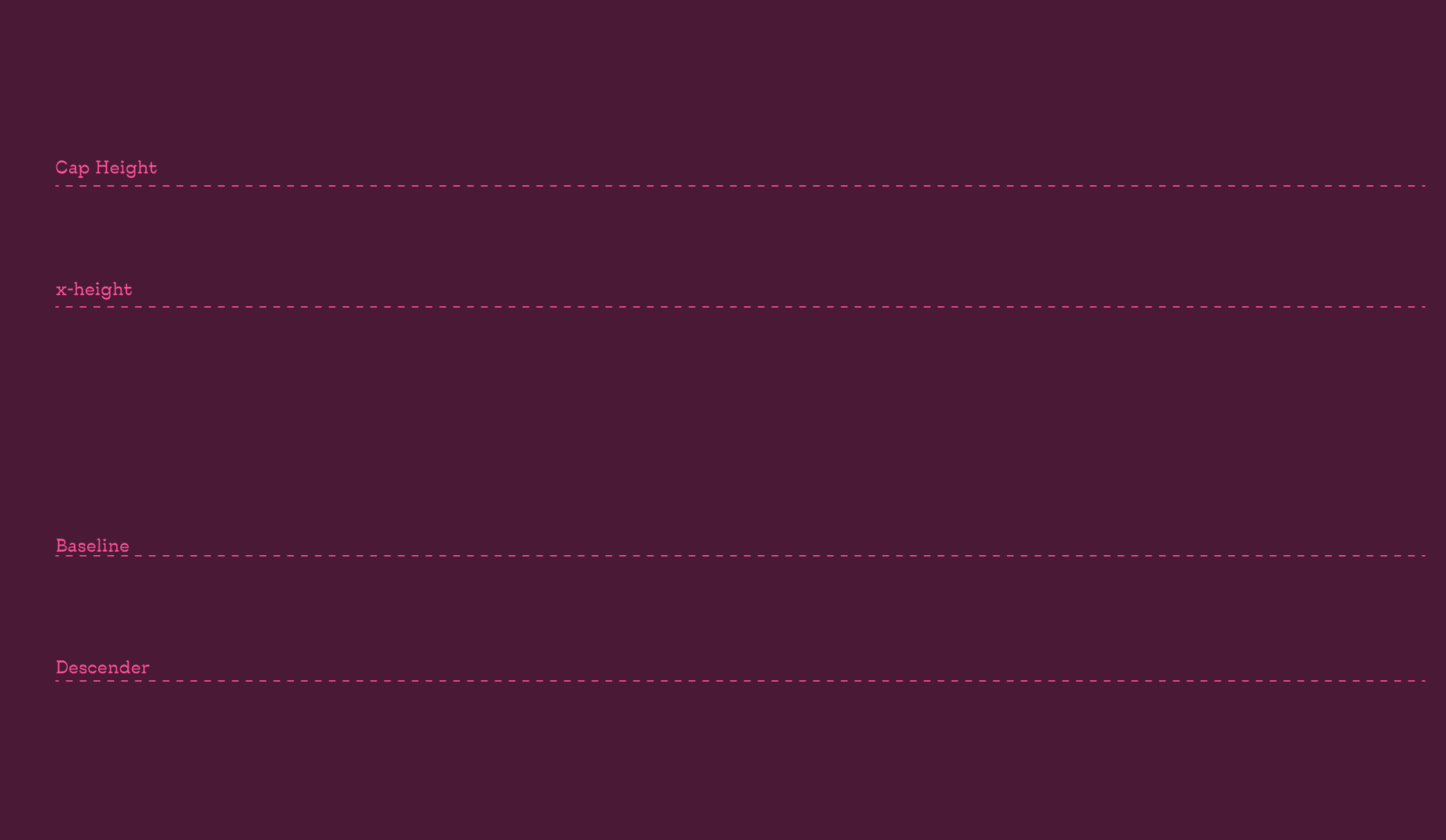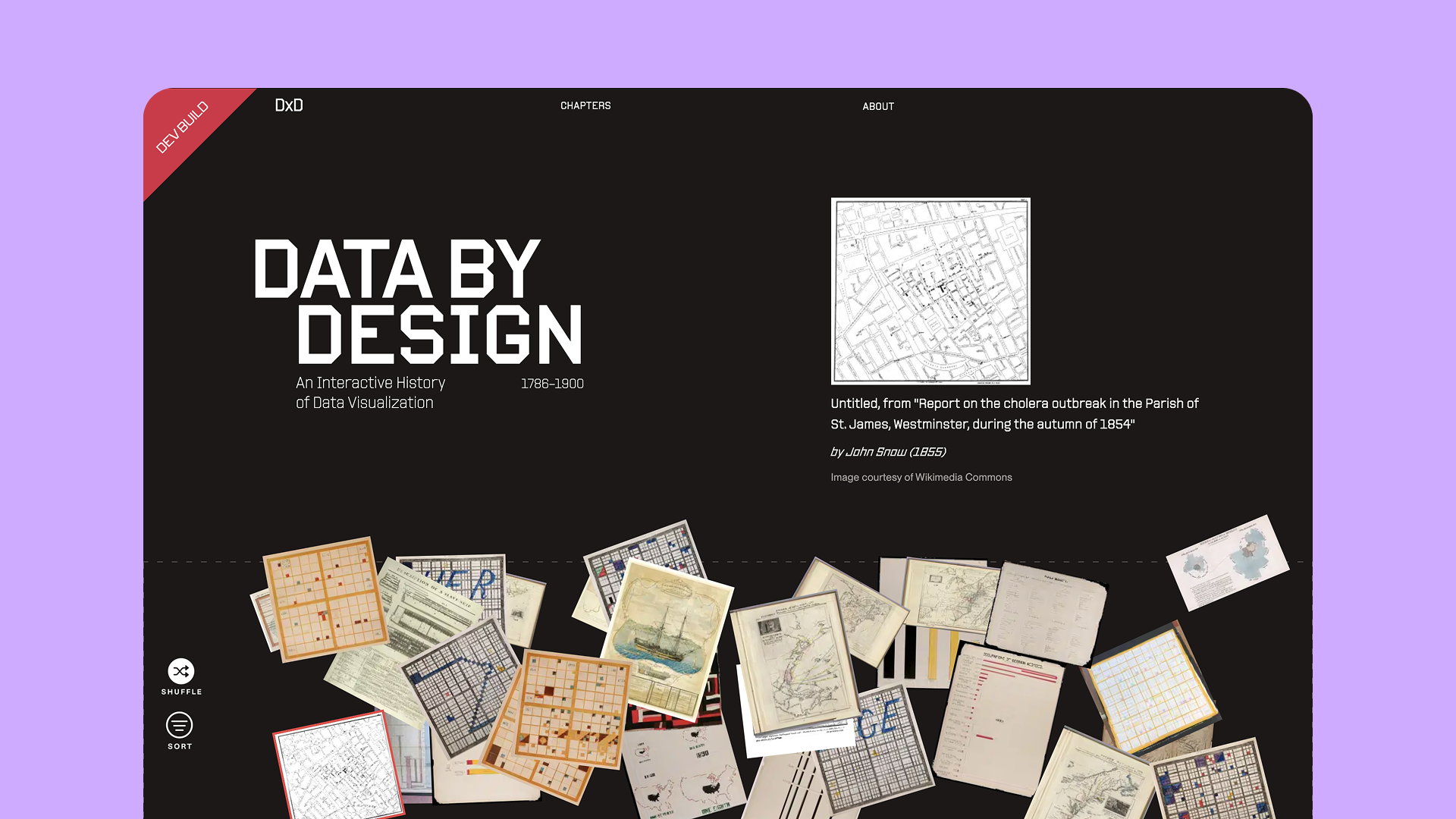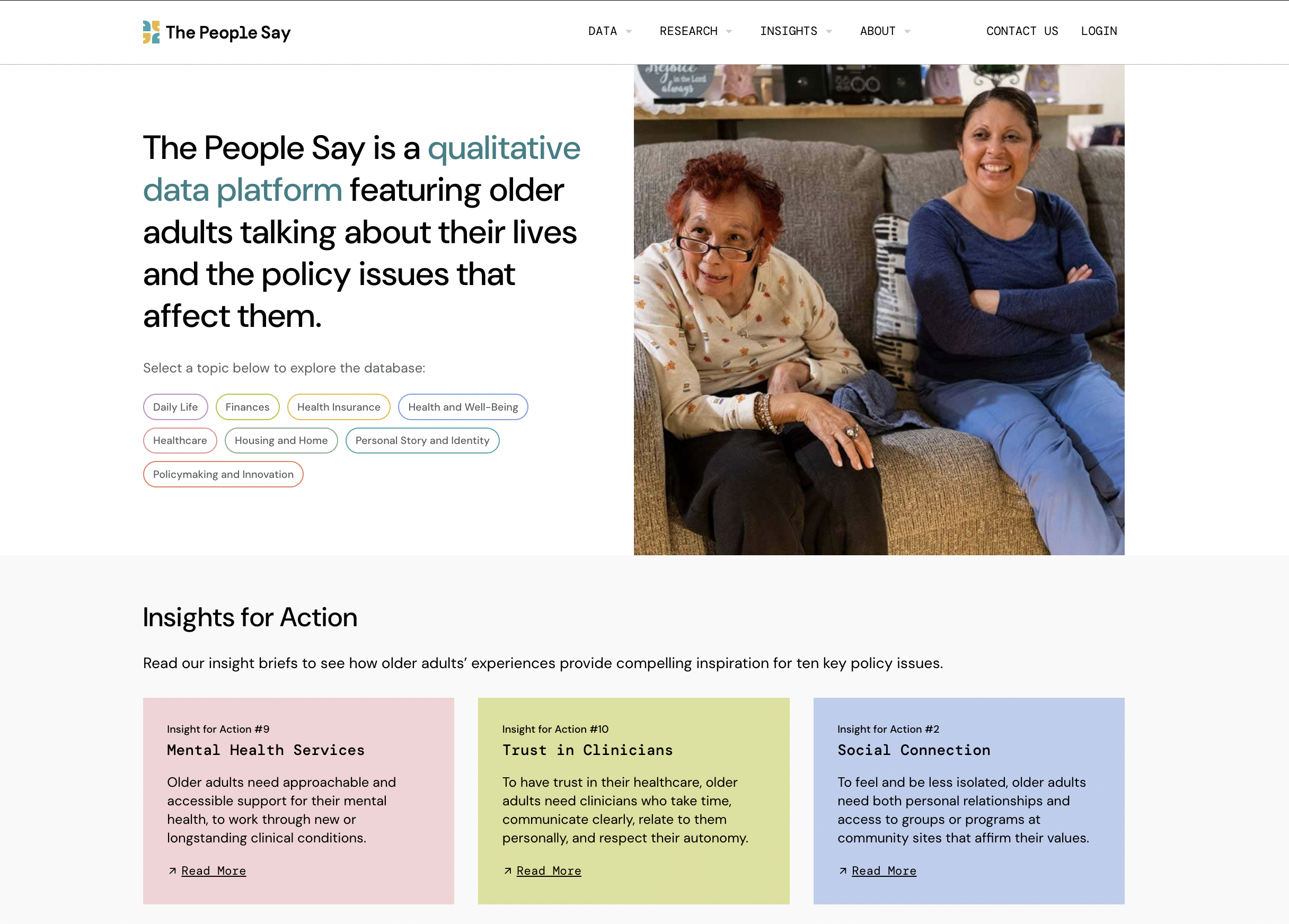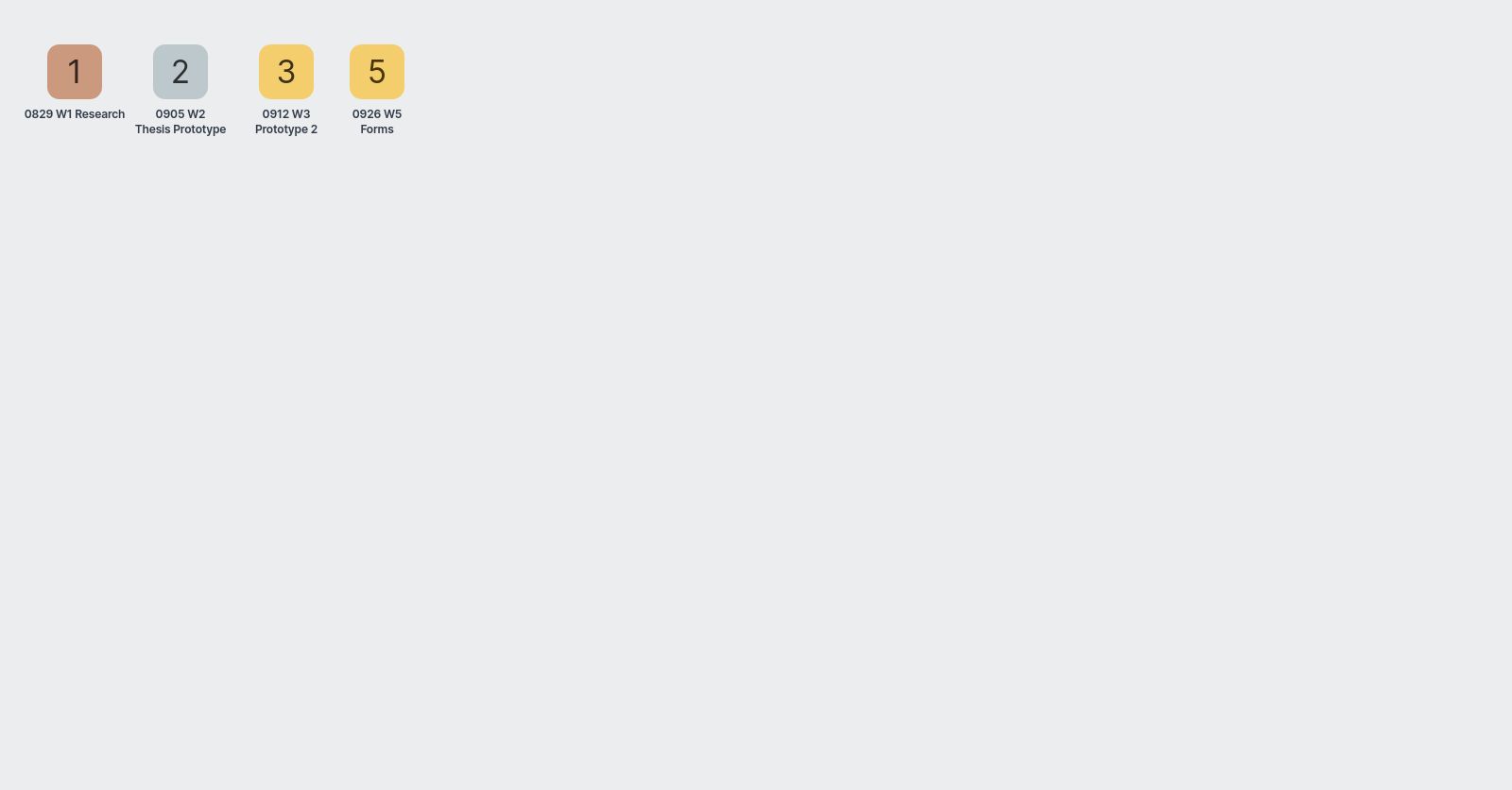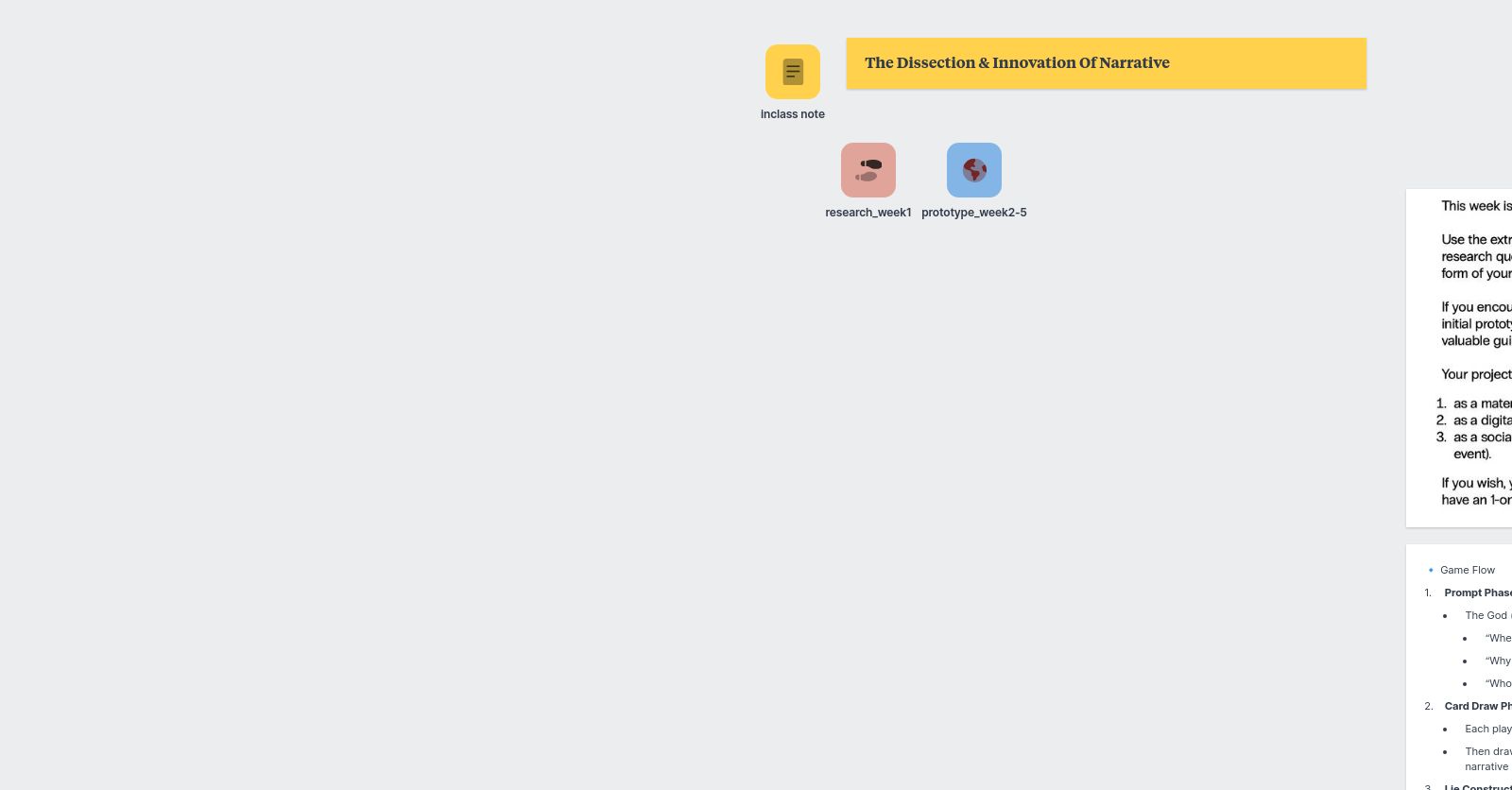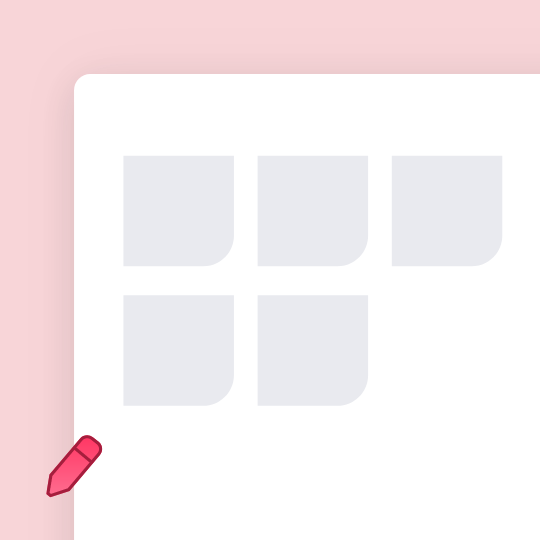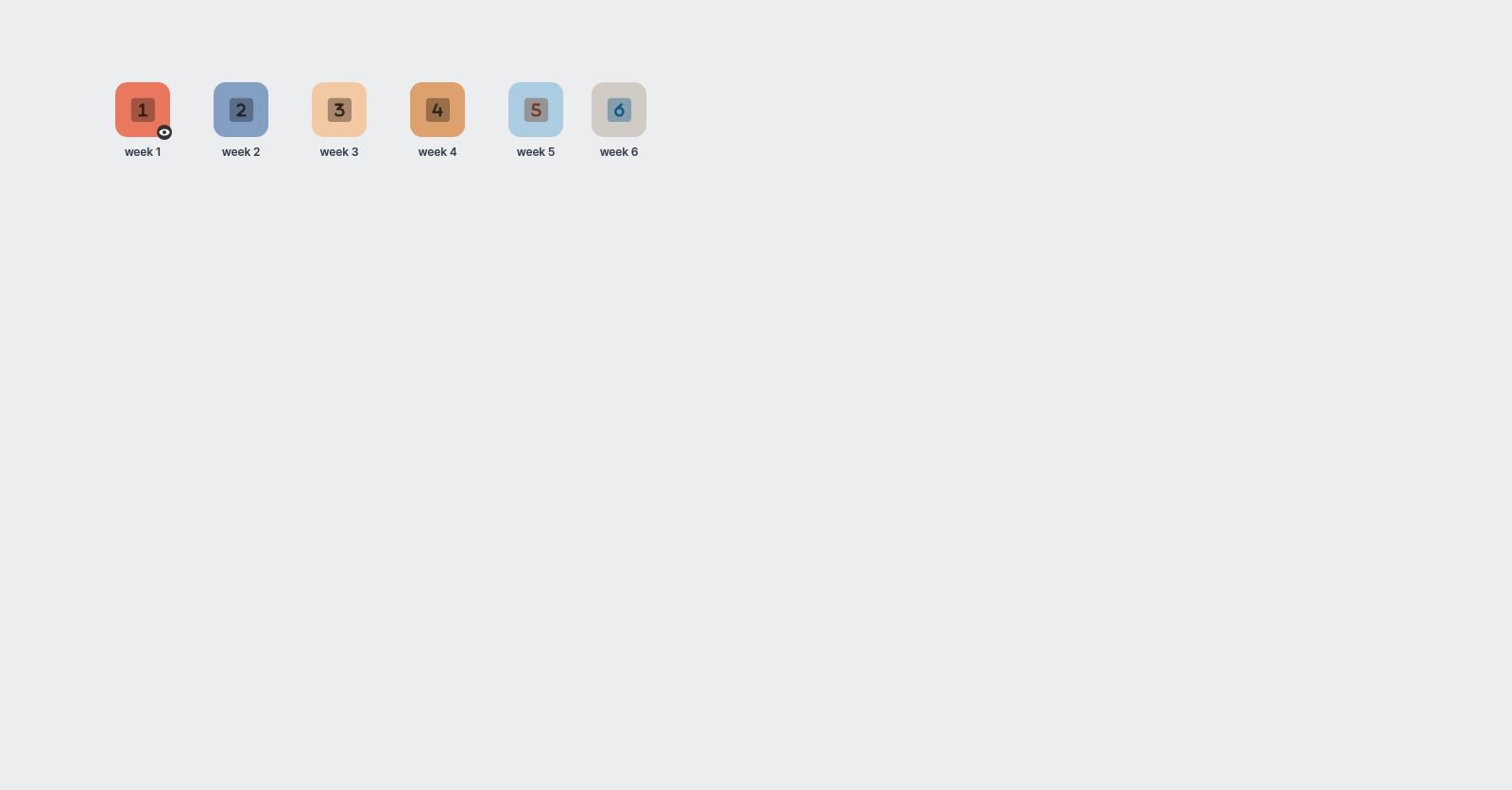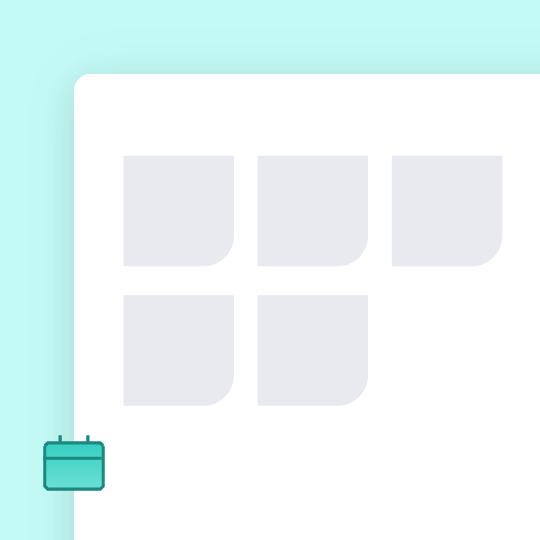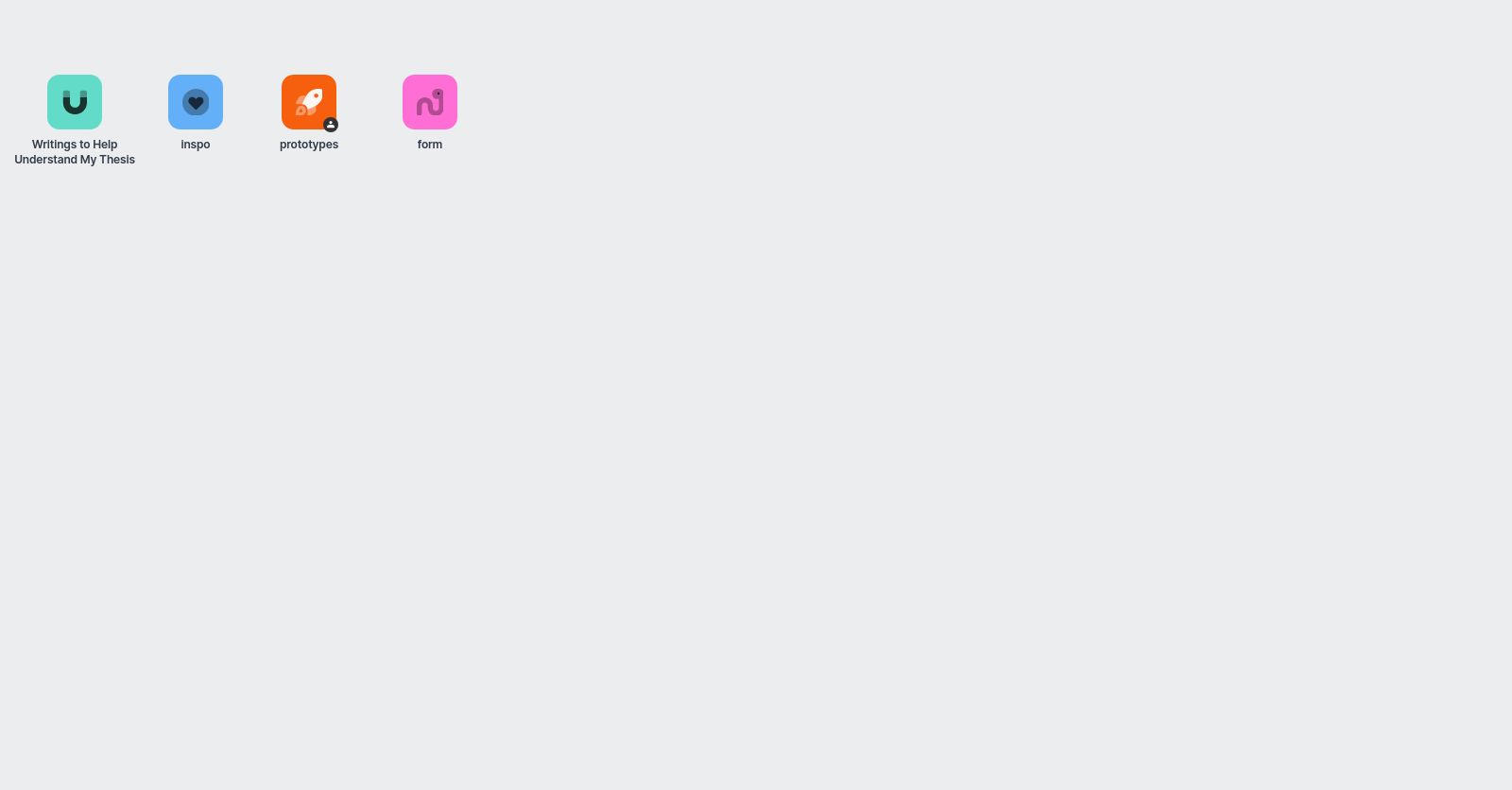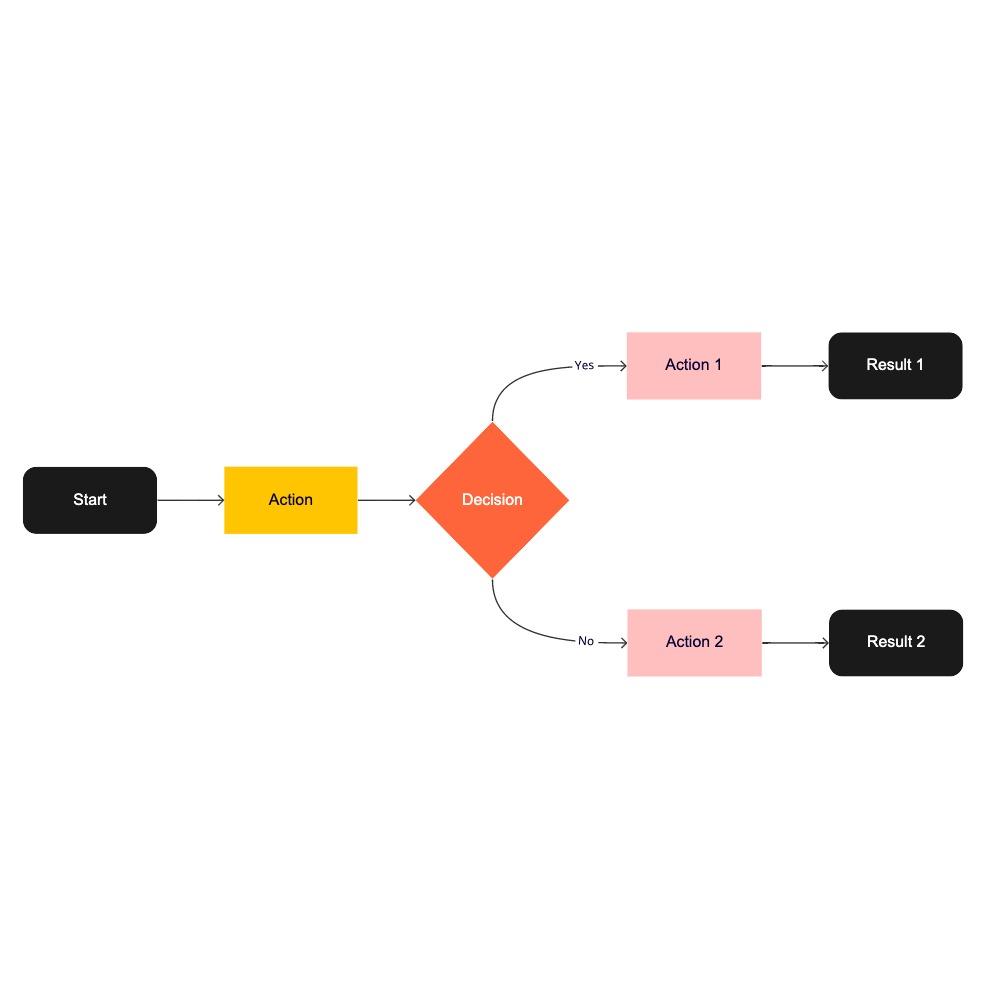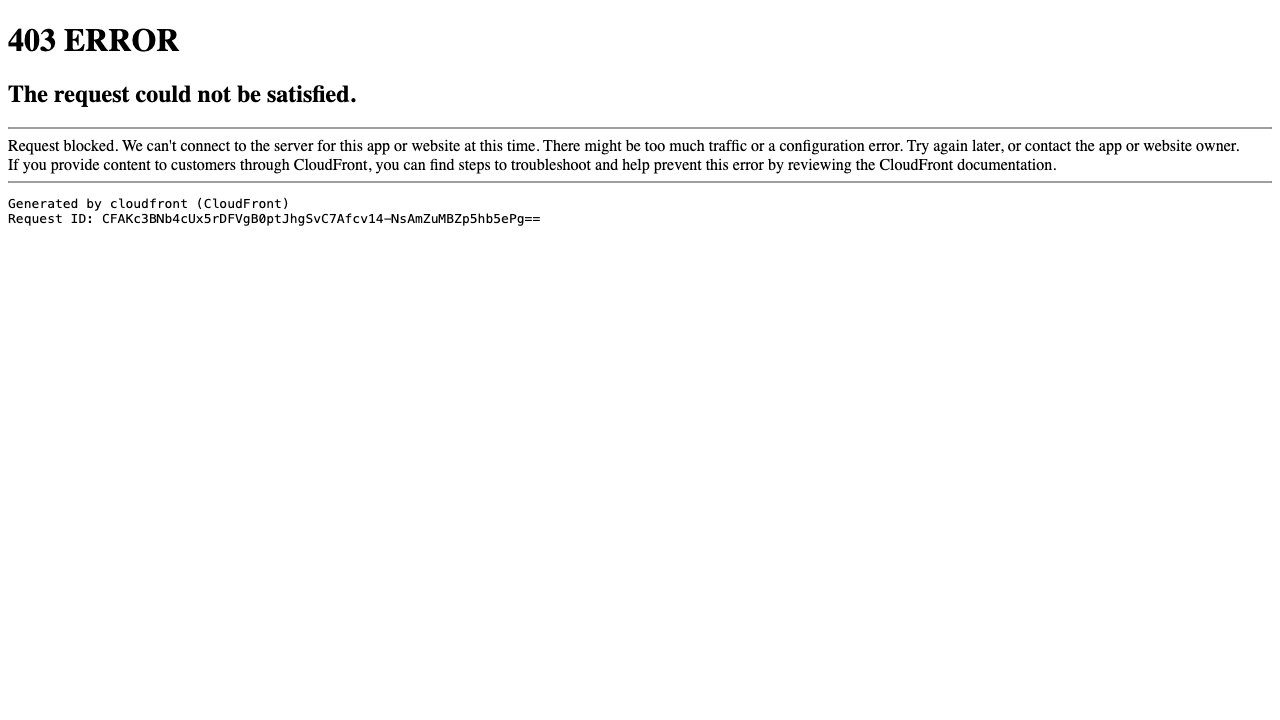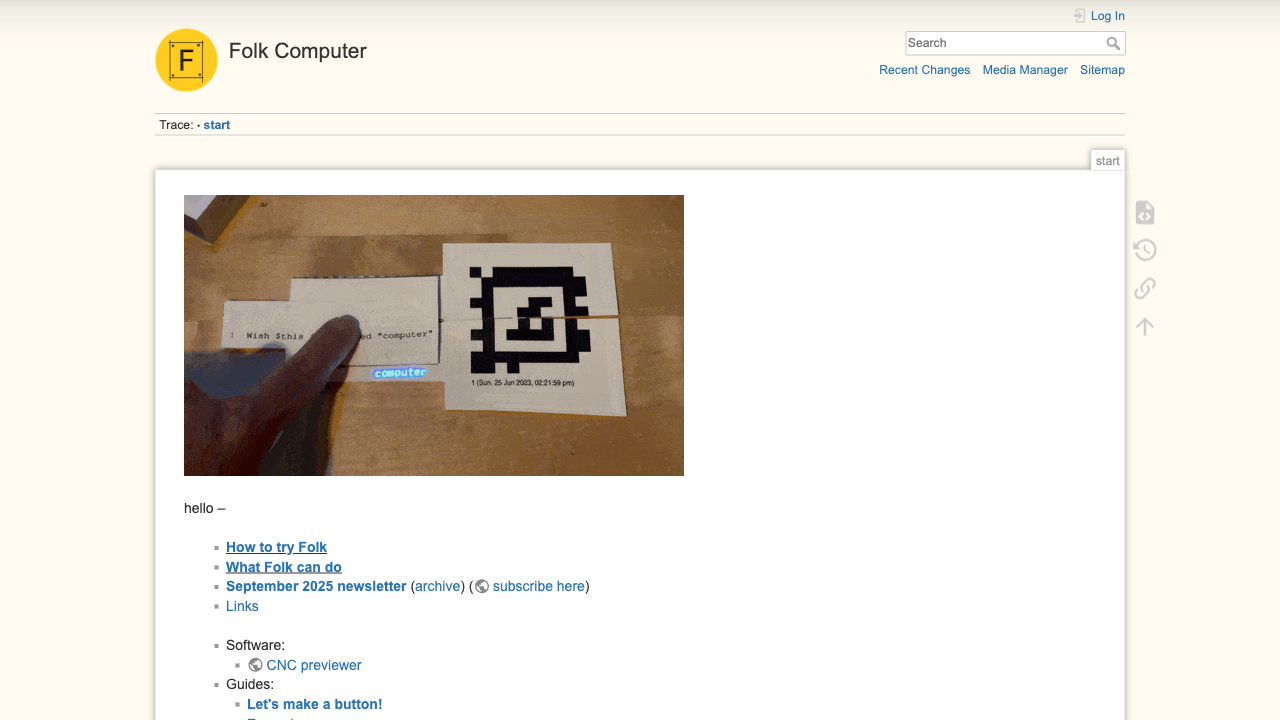Week 1: Welcome! (Aug 29)
Slides (password: pratt)
In Class Activity
Questionaire
Assignment
Due: Next week / Submit
This week is all about Research!
Take some time to think about what inspires you and what excites you as a designer or maker. Find a few works, projects, or ideas that catch your attention and write a sentence or two about why they speak to you. Then, jot down a short reflection on any through-lines, patterns, themes, or questions you notice in these inspirations. Finally, make a simple sketch, diagram, or word map of an idea you might want to explore in your thesis.
We will discuss these next week.
Week 2: Co-create, Research, Prototype (Sep 5)
Slides (password: pratt)
In Class Activity
Assignment
Due: Next week / Submit
This week is all about Prototyping!
Over the next 5 days, create 5 different simple prototypes for your project—sketches, diagrams, paper mock-ups, role-play, or any low-fidelity form. Make each one distinct. For each prototype, write a sentence or two about what it revealed, what worked, and what surprised you. Focus on exploration and discovery, not polish.
We’ll share and discuss these in the next session.
Week 3: When Does Making Become Research? (Sep 12)
Slides (password: pratt)
In Class Activity
Assignment
Due: Next week / Submit
This week is all about Iterative Prototype!
This week, you will create a new set of prototypes that build on the insights, surprises, and questions from your first round. Over the next five days, produce another five prototypes that explore unresolved aspects, test assumptions, or extend your previous discoveries.
Work with you buddy and try to think iteratively. For each prototype, write a brief note on what it revealed, what worked, and what unexpected insights emerged. Let it informs the next one. Focus on iterative exploration and knowledge generation.
Week 4: Mapping Axes (Sep 19)
Slides (password: pratt)
In Class Activity
Assignment
Due: Next week. Print them out!
Crit 1: Research Question!
This week, you will synthesize your prototype mappings and prior research to formulate a clear, focused research question. This question should highlight 1–3 possible directions your research question could take for the next five weeks of iteration. (iteration 2)
- Synthesize your prototype mappings and prior research to formulate a clear, focused research question.
- Reflect on both successes and challenges, including prototypes that worked, those that didn’t, and insights gained from each.
- Highlight 1–3 potential directions your research question could take over the next five weeks of iteration.
- Use the “riddle” exercise to reflect on the trajectory of your research: what you’ve explored, discovered, and learned.
- Emphasize how your prototypes and insights inform and shape the research question you are developing.
- Each person will have 7 minutes to present and 7 minutes to receive feedback.
- Print out your materials and bring them to class.
Week 5: Crit 1 (Sep 25)
Slides (password: pratt)
Assignment
Due: Next week
This week is all about Form!
Use the extremes you have explored as a means to generate forms for your research question. Based on this exploration, identify 3 possibilities for the final form of your project, considering both conceptual and practical implications.
If you encounter uncertainty or difficulty in determining these forms, consult your initial prototypes or revisit the mapping axis exercise, as these tools can provide valuable guidance and help clarify your design direction.
Your project can take in the shape of any of these:
- as a material form (object, installation, print, etc.),
- as a digital/interactive form (website, code sketch, AR/VR, animation, etc.),
- as a social or performative form (workshop, performance, collective action, event).
If you wish, you can also generate one idea for each of these concepts. We will have an 1-on-1 session next week.
Week 6: Tooling (Oct 3)
Slides (password: pratt)
Assignment
Due: Next week
This week is all about Medium!
Medium is the message. How does the choice of platform, tool, or environment shape your project? From the three possible forms you discussed, choose one direction and begin prototyping it as a way to test your ideas.
Keep it small and sketch-like: the aim is to learn, not to polish. As you work, try pushing into one of four medium tracks—Generative & Poetic Algorithms , Web & Interactive Experiences, Fabrication & Installation or Embodied & Mixed Realities or more.
Bring your prototype and a short reflection on what the medium revealed about your concept to share next week.
For each prototype/medium you’ve tested, list out all the affordances of it and what it can offer you.
Environment Setup
Resources
Week 7: Resources (Oct 10)
Slides (password: pratt)
Assignment
Due: Next week / Print Them Out!
This week is all about Medium!
This week, choose one of the three directions you discussed and begin developing it using a specific medium.
Build a more refined prototype that shows how the medium shapes your concept. Then write a short reflection on what the process revealed. Use the riddle exercise if you feel lost. What the medium offered, what it limited, and how it influenced your idea? Bring both your prototype and reflection to class next week.
Write a few passage accompany your design:
- Consider how your chosen medium differs from the work of others exploring similar ideas.
- Identify ways to expand, distinguish, and differentiate your contribution.
- Determine the form your argument or idea takes, and if designing an artifact, clarify what it could be and why.
- Describe how your idea translates into a tangible design artifact.
Resources
Week 8: Cybernetics (Oct 17)
Slides (password: pratt)
Assignment
Due: Next week
This week is all about Feedback!
Move beyond simply receiving critique. Make feedback itself your design material. Choose a work-in-progress and stage a user test that invites real participants to engage, react, and intervene. Don’t just observe: design the protocol of interaction. Decide how feedback will be elicited, recorded, and re-entered into the work. How do users know what kind of response is desired? What affordances, instructions, or provocations shape what they give back?
Write a few passage accompany your design:
Your prototype this week should embody feedback as a participatory system. Design a way for others to intervene through annotation, participation, response, or interpretation. Document the process and outcomes: what surfaced that you couldn’t predict? How did your role shift between designer, facilitator, and participant?
Your goal is not only to collect reactions, but to design the conditions under which feedback becomes meaningful, situated, and reciprocal.
Week 9: Cybernetics (Oct 24)
Slides (password: pratt)
Assignment
Due: Next week. Submit
This week is all about Worksheet!
Use the questions in the worksheet to refine your ideas and develop them into a presentation for Crit 2. It should be a quick elevator pitch (5 mins less) while presenting your current research + prototypes.
Worksheet:
- What is going on in the world related to your topic? → What is your Research Question?
- Why does that matter? → What community is this project serving?
- What you intend to explore through your research and design? → What form are you currently experimenting?
- What's an end goal? What's the impact you're looking for? → Questions you have or need help on?
You are welcome to use any of the techniques we’ve explored in class to explore and advance your concept, though you only need to include them in your presentation if they help illustrate your concept and its trajectory.
Other Methods:
Week 10: Crit 2 (Oct 31)
Class Time
Professor Matt Martin will be joining us for Crit 2 this week!
- Please be ready to show your current research + prototypes in a quick elevator pitch (5 mins less) while presenting your ideas.
- We will be giving feedback on your work and helping you refine your concepts for the final phase of your project.
- The feedback doc can be found here.
Assignment
Due: Next week. Submit
Please upload your current research proposal here. This week is all about Planning!
Now we are approaching the end of the semester. We are going to start planning out the final phase of your project. Use the feedback from Crit 2 to identify the next 4 week plan of your project, considering both conceptual and practical implications. We will have a check-in session next week to discuss your plan.
Keep in mind the following questions as you plan:
- How does your Body of Work get translated, transformed, distributed?
- What edits, selects, and refinements need to be considered?
- How does the display, installation, exhibition, and the location and environment contextualise the work?
- How are you formatting and curating your work for Open Studios at Pfizer?
- How are you seeking to engage your audience in and through the work in this context?
Week 11: Planning (Nov 7)
Class Time
We will be having a check-in session this week to discuss your project plans for the final phase of your work. Please come prepared to share your 5 week plan and any questions or concerns you may have as you move into this next stage of your project development.
We're also going to take some time to review the logistics and expectations for Open Studios at Pfizer, ensuring everyone is clear on how to present and engage with the audience effectively.
Please use this //worksheet// and work in pairs to reflect on your progress so far and outline your plans for the coming weeks.
Open Studio
Read The Full Details Here
- We are pleased to announce the 2025 Pfizer Open Studios (formerly known as Graduate Inquiries Exhibition), which is an opportunity for MFA and MS students to share their practice in the form that feels most relevant to them; this event highlights research, process, experimentation and dialogue, in addition to design outcomes.
- Students may display elements of their process, such as sketches, drafts, prototypes, research notes, or experiments, to present a body of work that reflects their current focus and their relevant path to here. This is a moment that marks the movement towards synthesis, where students begin to curate their ideas through form and marks a natural transition towards the body of work that will unfold in the spring semester during Thesis II and Capstone Project.
Logistics
- Week 12: Nov 14
- Week 13: Nov 21
- Week 14: Nov 28 (Thanksgiving Break / NO CLASS)
- Week 15: Dec 5 (Finalization)
- Open Studios: Dec 12, 1-4pm Guest Crits, 5-9pm Public Viewing
Week 12: Prepping for Open Studios (Nov 14)
Class Time
This week, we’ll break into pairs for a brief check-in to see how you’re progressing on your five-week plan.
While you're waiting for the check-in, please fill out this //worksheet// by End of Class and work in pairs to reflect on your progress so far.
Check-In Schedule
Please come prepared to share your plan and any questions or concerns you’d like to talk through.
- Group 1: Zitong & Nora
- Group 2: Xuan & Han
- Group 3: Jenelle & Sky
- Group 4: Cindy & Sam
Open Studio
Read Guidance & Key Dates
We'll take some time to review the logistics and expectations for Open Studios at Pfizer, making sure you’re clear on how to present your work and engage with the audience effectively.
Important Dates
November 19:
Deadline to fill out forms for equipment & space needs
December 3:
Equipment & label pick-up — 12–1 PM & 4–5 PM
Steuben 4th Floor (STEU Office)
December 11 (Thursday):
Installation deadline (EOD)
December 12 (Friday):
Final Presentation — 1–4 PM (Pfizer), Open Studios — 5–9 PM
December 14 (Sunday):
Clean-Up — 10 AM–1 PM
Logistics
- Week 12: Nov 14 (Today! Check-In & Open Studios Prep)
- Week 13: Nov 21 (Polishing Moves & Open Studios Prep)
- Week 14: Nov 28 (Thanksgiving Break / NO CLASS)
- Week 15: Dec 5 (In Class Presentation Run-Through)
- Open Studios: Dec 12, 1-4pm Guest Crits, 5-9pm Public Viewing
Week 13: Open Studios Setup (Continued) (Nov 21)
Class Time
This week, we’ll break into pairs to continue our check-in to see how you’re progressing on your five-week plan. We will also discuss your exhibition plan for Open Studios.
In-Class Worksheet
Fill-out Short Description/Title Here
Discuss the following with your partner:
- Your title and short description for your work
- Your progress so far
- Your plan for the exhibition
- Any questions or concerns you’d like to talk through.
Check-In Schedule
We will check-in in a group of two. Please come prepared to: share your plan and any questions or concerns you’d like to talk through.
- Group 1: Zitong & Han & Sha
- Group 2: Xuan & Sky
- Group 3: Jenelle & Sam
- Group 4: Cindy & Nora
Logistics
- Week 13: Nov 21 (Today! Check-In & Open Studios Prep)
- Week 14: Nov 28 (Thanksgiving Break / NO CLASS)
- Week 15: Dec 5 (In Class Presentation Run-Through)
- Open Studios: Dec 12, 1-4pm Guest Crits, 5-9pm Public Viewing
Assignment
For Dec 5 Class:
Crit 3 Guide
- Use the Crit 3 Guide to prepare for your Crit 3 presentation.
- Please prepare a 6-8 minute run-through for peer and instructor feedback.
- Please make sure your exhibition plan is finalized and almost ready for installation.
- Bring any materials or props you plan to use for your Open Studios presentation for a mock setup and practice.
Week 14: No Class - Thanksgiving Break (Nov 28)
There is no class this week due to Thanksgiving Break. Enjoy your time off!
Week 15: Rehearsal for Open Studios (Dec 5)
Check-In Schedule
We will run through your presentation one by one to help you prepare for Open Studios next week. This is your chance to get feedback from your peers and instructor to refine your presentation.
Presentation Order:
- Zitong
- Han (sick)
- Sha
- Xuan
- Sky
- Jenelle
- Sam
- Cindy
- Nora
Open Studios Checklist
Crit 3 Guide
Exhibition Space Assignment
- Picked up any equipment, labels, or materials needed for your installation.
- Make sure your exhibition plan is finalized and ready for installation.
- Prepare any materials or props you plan to use for your Open Studios presentation.
- Practice your presentation to ensure it fits within the 6-8 minute timeframe.
